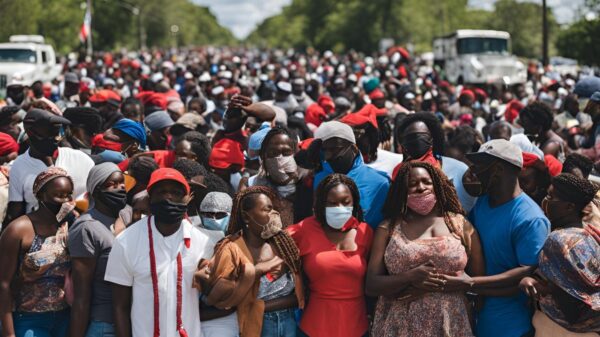The Haitian Times
Before the Dec. 14 deadly fire occurred in Cap-Haitien drew headlines, Haiti had been struggling with a fuel shortage crisis that intensified over the past year. As fuel shortages persisted, they brought allegations of corruption by gas station owners, attempts by law enforcement to confiscate fuel sold on the black market and gangs controlling access to seaport where fuel enters the country.
To help you catch up, here’s a rundown of Haitian Times stories that tracked the ongoing fuel crisis as it emerged.
- Oct. 21, 2020: President Jovenel Moïse invokes a 1995 law to ask the petroleum industry to drop prices. Gasoline fell from 224 gourdes to 201 gourdes, about USD $2.24 to $2.01, as a result.
- Jan. 5, 2021: Motorcyclists and car drivers crowd gas stations throughout the country as the government distributes 165,000 barrels of gasoline to combat a fuel shortage.
- June 18, 2021: Gang battles in the Martissant area, which leads to the Varreux port terminal where fuel arrives in Haiti, causes a gasoline shortage, officials say.
- Aug. 3, 2021: Police confiscate gas being sold on the black market by street vendors in Cap-Haitien as complaints from drivers about higher prices rise.
- Aug. 5, 2021: Motorcyclists in Port-de-Paix protest against gas station owners, accusing them of selling fuel to street vendors in a price-gouging scheme where vendors give kickbacks or profits with the gas station owners.
- Sep. 10, 2021: Armed gangs use blockades to control access to the Varreux port in Port-au-Prince, preventing gas distribution to businesses in need of fuel to keep their systems running.
- Oct. 5, 2021: Schools and businesses in the capital are shuttered in solidarity with a strike against surging fuel prices.
- Oct. 14, 2021: Once again, motorcycle taxi drivers throughout Haiti protest against fuel shortages, saying that gas station owners were selling fuel to black market vendors, increasing the price of fuel for the drivers.
- Oct. 21, 2021: Drivers in Tabarre, Delmas, and Jérémie continue protesting against soaring fuel prices.
- Oct. 22, 2021: Public transport drivers join the motorcyclists in protests across the country, demanding increased access to fuel.
- Oct. 25, 2021: The lack of fuel forces nearly 40 hospitals to close as their power plants start running out of diesel.
- Nov. 17, 2021: G-9 gang leader Jimmy “Barbecue” Chérizier allows fuel to move from Port Varreux, on the condition that Prime Minister Ariel Henry resign and armored police vehicles leave the port.
- Dec. 10, 2021: One person dies and several others are injured when a gas tanker explodes in a Trou-de-Nord storage warehouse in northern Haiti. The circumstances are unclear.
- Dec. 14, 2021: A fuel tanker explodes in Cap-Haitien, killing at least 59 people and injuring dozens more. Officials say an attempted theft caused the blast.

You must be logged in to post a comment Login